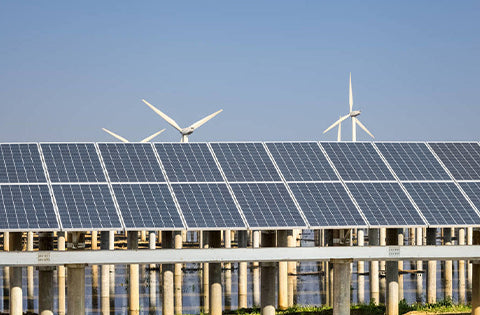Running a RV to have an enjoyable trip is a great pleasure for most people who are overwhelmed by the hectic city life. But for some RV starters, some problems they may overlook caused much inconvenience. Today, SOLARPARTS summarizes some common RV solar mistakes to help you spend an enjoyable RV trip.
1: Buying RV solar panels you don`t need or won`t use
Buying solar you don’t need or won’t use is the most obvious error. If all you do is travel from RV park with hookups to RV park with hookups, you don’t need solar panels to recharge your batteries. Your batteries will recharge just as well and probably faster using the power at your destination. If you occasionally spend the night without hookups during a quick stop on a longer journey, I would argue for more or larger batteries, not for solar panels.
When you start spending more than one day in a row camping at locations without electrical hookups, this argues for recharging your batteries with solar panels. Then the question becomes, how often do you camp this way? If only once or twice a summer, then a generator might be a better, less expensive answer. If you do get a generator, get a quiet one.
If your battery discharges overnight to a point of concern, you need a larger capacity battery or a lower draw from the battery. This does not argue for a solar panel to recharge your battery in the daytime. Instead of RV solar or a generator, you could use your truck engine and alternator as a generator. Be careful here, small engine alternators are not designed to provide long-duration high amperage battery recharging. Be especially careful with this option with lithium batteries; they don’t resist the charge and can damage an alternator quickly.
2: Guessing at what you need
Most people don’t have any idea about how much electricity they use. The best way to tell how much electricity you use from a battery is by measuring consumption using a shunt-based battery monitor. Once you know how much electricity you use, then you can start designing your RV solar system. Start designing by figuring out your battery size. A good rule of thumb is to size your battery so that you can operate for 24 hours without recharging. Once you have enough battery to run 24 hours, you can then determine how many solar panels you need to perform the recharge.
3: Installing panels that are not exposed to full sun
Any little shade kills the energy production of the panel. It is better to have a poor orientation on the panels than it is to have shade on the panels. Depending on how your system is wired, shade on one panel can even kill the energy production of the adjoining panel. Solar panels are designed to sit in the direct sun. When they are in the shade, they sometimes can produce only 10% of their potential energy.
4: Installing panels flat on your roof
If solar panels are installed flat to the roof, their operating temperature will increase, and as this happens the output of the panel will decrease. The effect isn’t quite the disaster that installing panels in the shade is, but they will not perform nearly as well without air circulation behind the panel.
5: Failure to account for true performance and expansion
Almost always, due to less than ideal orientation, your solar panel needs to be oversized by a factor of about 30%. If the panel says 100-watt output, you can count on about 70 watts of usable power per hour during the peak exposure hours, which is about five hours per day, even in the winter. Summer will give you about two extra peak exposure hours. Don’t expect a 100-watt panel to produce 500-watt/hours of usable energy each day. Lead-acid batteries also degrade solar panel performance because they resist being charged. A good practice would be to run wire with the idea that someday in the future you may want to add more solar panels to your system.
The above are five common mistakes that people who run a solar RV may meet. Keep following with SOLARPARTS to learn the another five mistakes about solar RV you need to avoid.
Twitter: Solarparts Instagram: Solarparts
Tumblr: Solarparts Pinterest: Solarparts
Facebook: Shenzhen Solarparts Inc
Email address: Philip@isolarparts.com
Homepage: www.isolarparts.com





